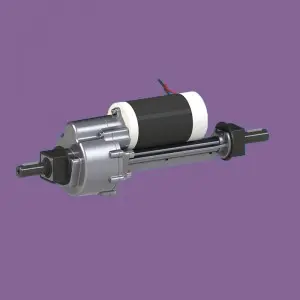Transaxles and differentials are an integral part of any vehicle’s drivetrain. The two work together to transfer power from the engine to the wheels. While the transaxle and differential are often mentioned separately, it’s important to understand their relationship and how they work together to promote smooth and efficient operation. In this blog, we will reveal the importance of the transaxle differential and explore its function in more detail.
Transaxles and Differentials: Basic Definitions and Functions:
Before we delve into the relationship between the transaxle and differential, let’s briefly define these two components:
1. Transaxle: The transaxle is a combination of transmission and axle. It integrates the functions of a transmission (converting the rotational power generated by the engine into torque) and of an axle (providing necessary support to the wheels). Transaxles are commonly used in front-wheel drive and some all-wheel drive vehicles.
2. Differential: A differential is a mechanical device that allows the wheels to rotate at different speeds while still receiving power from the engine. It consists of gears, shafts and bearings and is responsible for evenly distributing torque between the wheels. Differentials are vital to maintaining vehicle stability, control, and smooth cornering.
Understand the relationship:
Now that we have a clear understanding of what a transaxle and a differential are, let’s explore their relationship:
The transaxle housing houses the differential. This combination offers several benefits, including reduced weight, simplified design and improved efficiency. By integrating the differential into the transaxle, manufacturers can create a more compact and lighter drivetrain, which is critical in front-wheel drive vehicles where space is limited.
Importance of transaxle differential:
1. Torque distribution: The differential distributes torque between the wheels. When the vehicle turns, the inside wheels travel a shorter distance than the outside wheels. The differential allows the wheels to rotate at different speeds while transmitting power through a series of gears to ensure stable cornering and prevent wheel slippage.
2. Traction control: In situations where one wheel may be losing grip, such as during cornering or slippery conditions, the differential in the transaxle helps transfer torque to the wheel with better traction. This improves the vehicle’s overall stability and control, reducing the chance of skidding or spinning.
3. Wheel speed optimization: The differential plays a vital role in optimizing wheel speed. By allowing the wheels to spin at different speeds, the differential ensures that power is efficiently applied to the wheel with the best grip. This helps improve traction and overall performance.
In summary, transaxles and differentials are integral components of a vehicle’s drivetrain. Integrating the differential within the transaxle housing offers many advantages, including reduced weight, better space utilization and improved drivability. The differential enables torque distribution, traction control and wheel speed optimization, helping to stabilize cornering, provide better control and enhance overall performance. By understanding how these components work together, we can more clearly understand the complexity of a vehicle’s drivetrain and appreciate the engineering expertise that goes into its design and function.
Post time: Oct-11-2023


